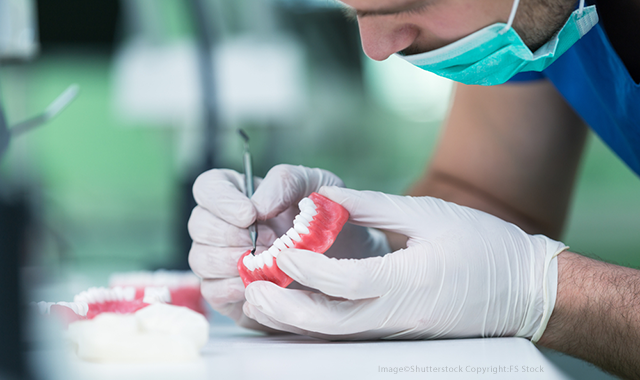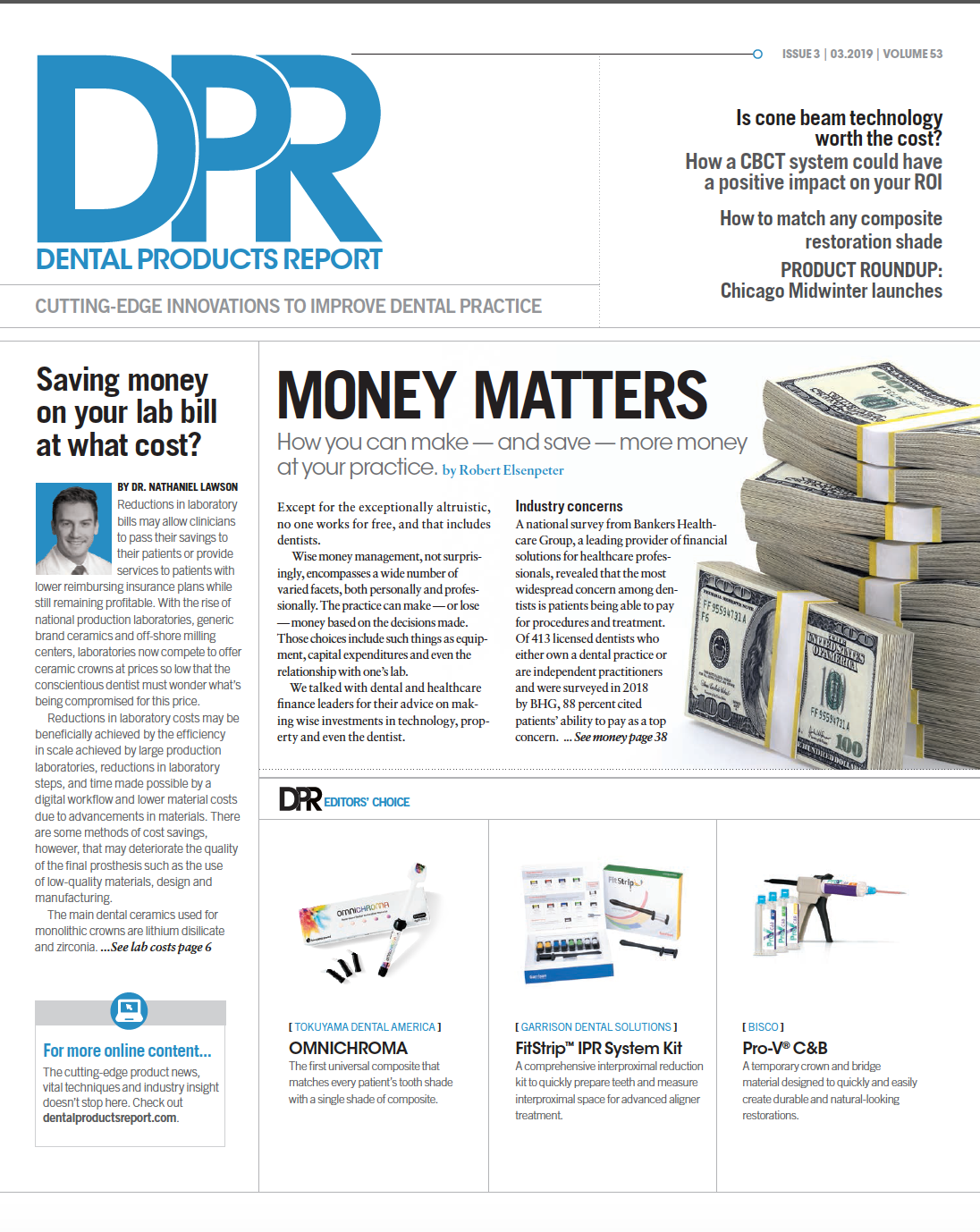Saving money on your lab bill at what cost?
Reductions in lab bills may allow clinicians to pass savings to their patients, but some cost savings may deteriorate the quality of the final prosthesis.

Reductions in laboratory bills may allow clinicians to pass their savings to their patients or provide services to patients with lower reimbursing insurance plans while still remaining profitable. With the rise of national production laboratories, generic brand ceramics and off-shore milling centers, laboratories now compete to offer ceramic crowns at prices so low that the conscientious dentist must wonder what’s being compromised for this price.
Reductions in laboratory costs may be beneficially achieved by the efficiency in scale achieved by large production laboratories, reductions in laboratory steps, and time made possible by a digital workflow and lower material costs due to advancements in materials. There are some methods of cost savings, however, that may deteriorate the quality of the final prosthesis such as the use of low-quality materials, design and manufacturing.
The main dental ceramics used for monolithic crowns are lithium disilicate and zirconia. Lithium disilicate is a material that was initially only manufactured by Ivoclar Vivadent with the brand name IPS e.max. Now, there are several similar types of lithium-containing glass ceramic crowns commercially available. Due to patents from Ivoclar Vivadent, the composition, and therefore the properties, of the newer glass ceramics are noticeably different than IPS e.max. The clinician experienced with the use of IPS e.max shouldn’t assume that similar materials are interchangeable without supporting laboratory and clinical testing.
Trending article: Dental care, south of the border

Unlike lithium disilicate materials, zirconia is manufactured and distributed with so many different brand names that even those of us who evaluate this material only recognize a small percentage of the commercially available materials. The large pucks from which zirconia crowns are milled start as a fine powder that’s pressed into shape. There are several factors that may influence the quality of a zirconia puck, including the purity of the raw powder, the exclusion of pores and the homogeneity of the packing of the powder into the disc. High-quality manufacturers not only control the manufacturing process but also implement quality control to ensure these standards are met. Some of the issues with low-quality materials may be realized immediately such as altered color/translucency and incorrect fit; however, some errors will only be realized with time such as decreased strength or aging resistance.
Even though most dental laboratories are digitally designing their crowns through software, the design of a crown isn’t an automatic process. There’s still a designer who digitally adjusts the contours, contacts, margins, emergence profile and occlusion of the crown. Even though the digital designer uses a mouse instead of a waxing instrument, the knowledge of how to design the crown must be possessed by the human being in charge. Additionally, not all contouring of the crown, particularly at the margins, comes out of the mill in its final condition. A technician will often put the finishing touches on the restoration by hand. In order to receive a high-quality restoration, the design and finishing of a restoration should be performed by a skilled and experienced technician.
A final technique-sensitive aspect of the crown fabrication procedure is the sintering or crystallization of the ceramic crown. The amount of time and the temperature at which a zirconia crown is sintered will affect its microstructure and ultimately its strength and translucency. Even if the manufacturer’s recommended sintering schedule is followed, a crown sintered in an uncalibrated furnace may actually be exposed to the incorrect sintering temperature.
In summary, the reduction in laboratory costs for ceramic crowns is beneficial for the business end of a dental practice, but the clinician should be cautious of using bargain basement-priced crowns as likely part of the cost savings affected the final quality of the crown.
